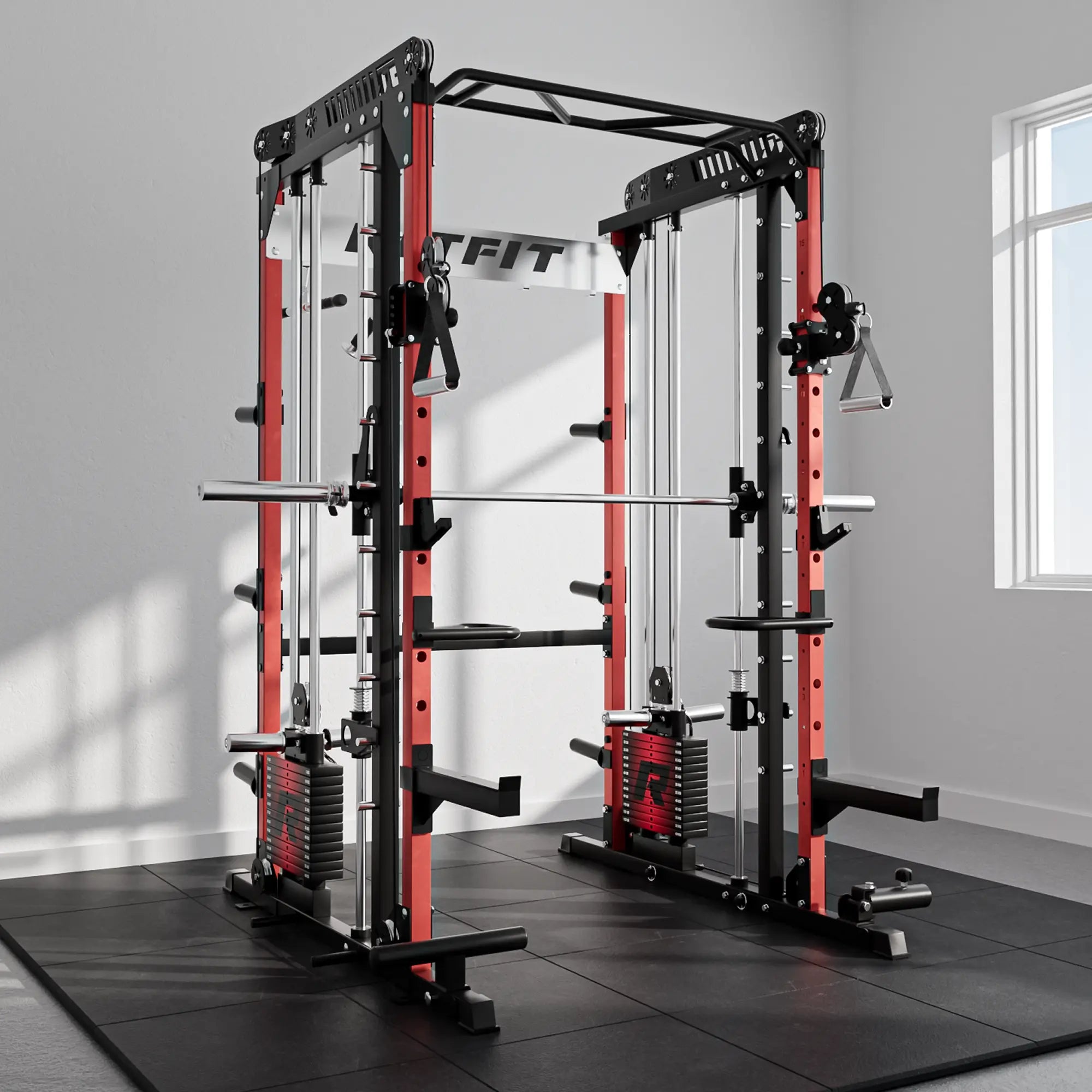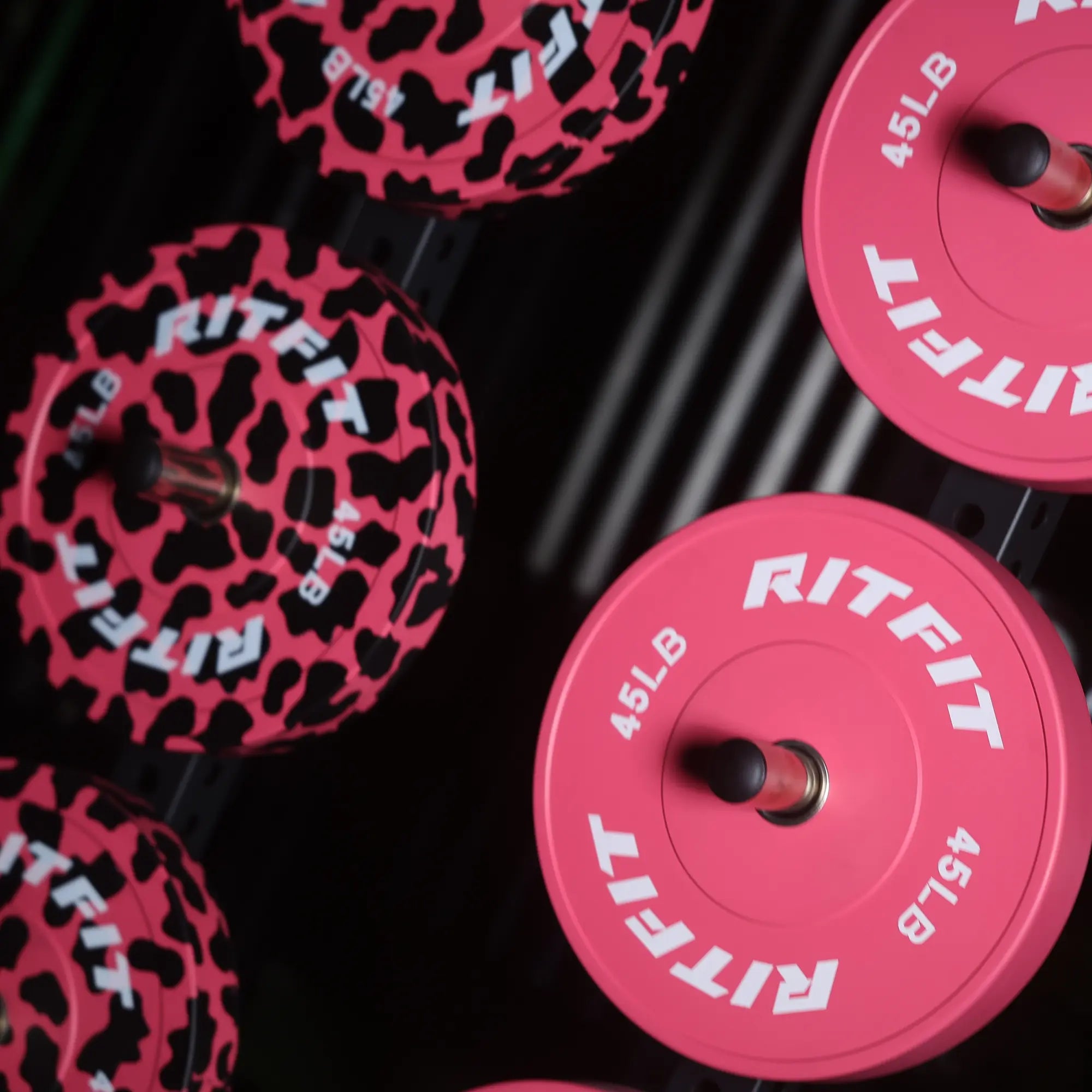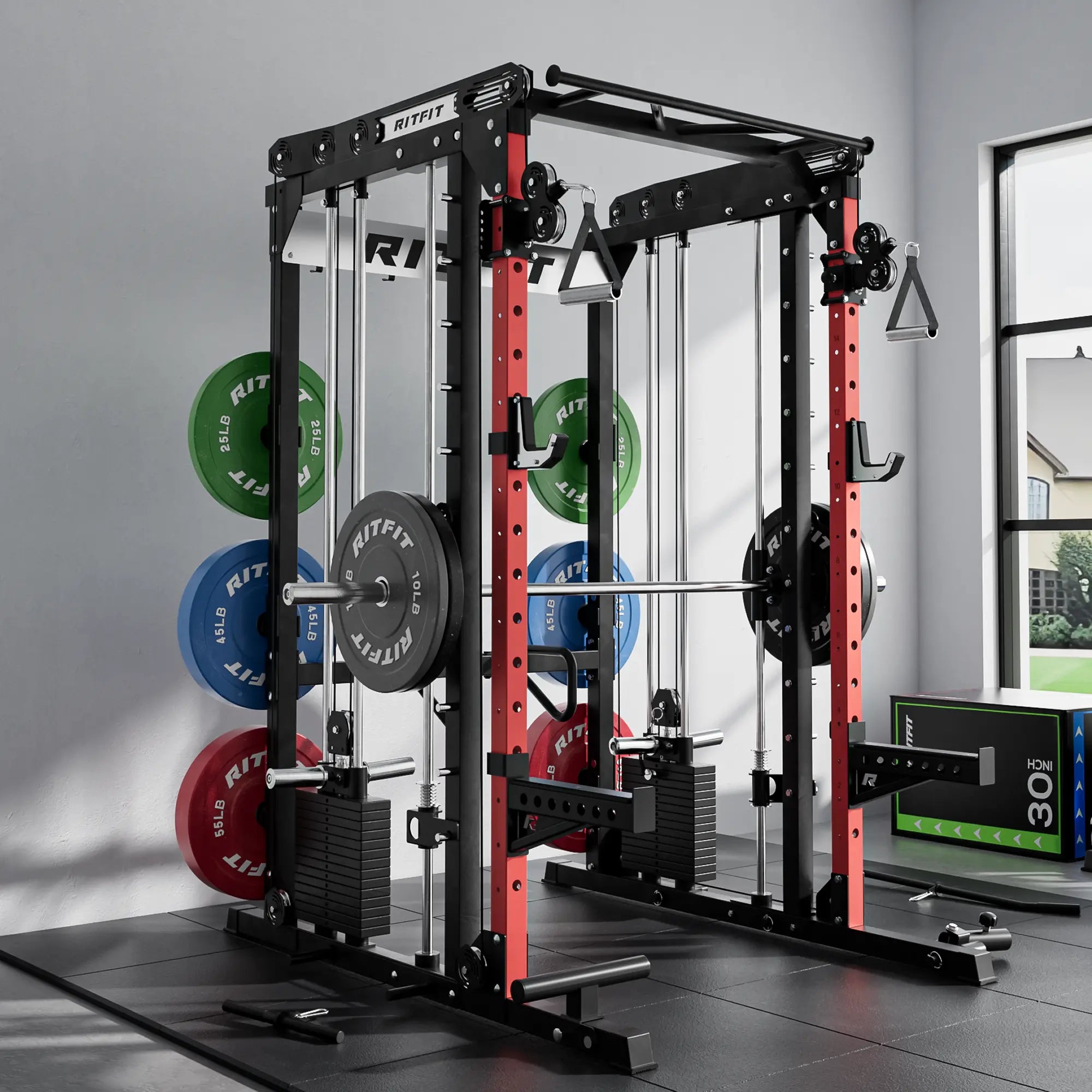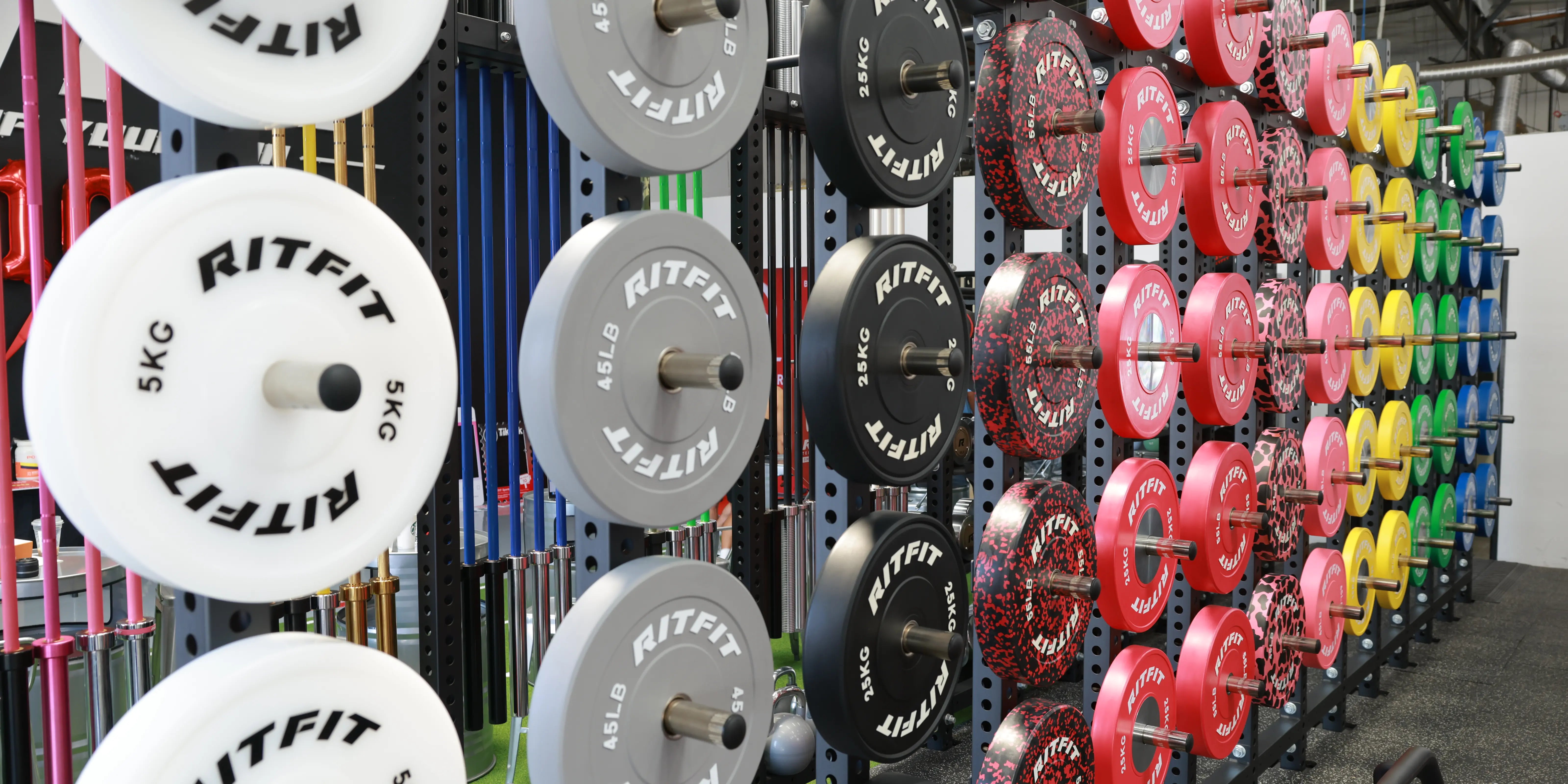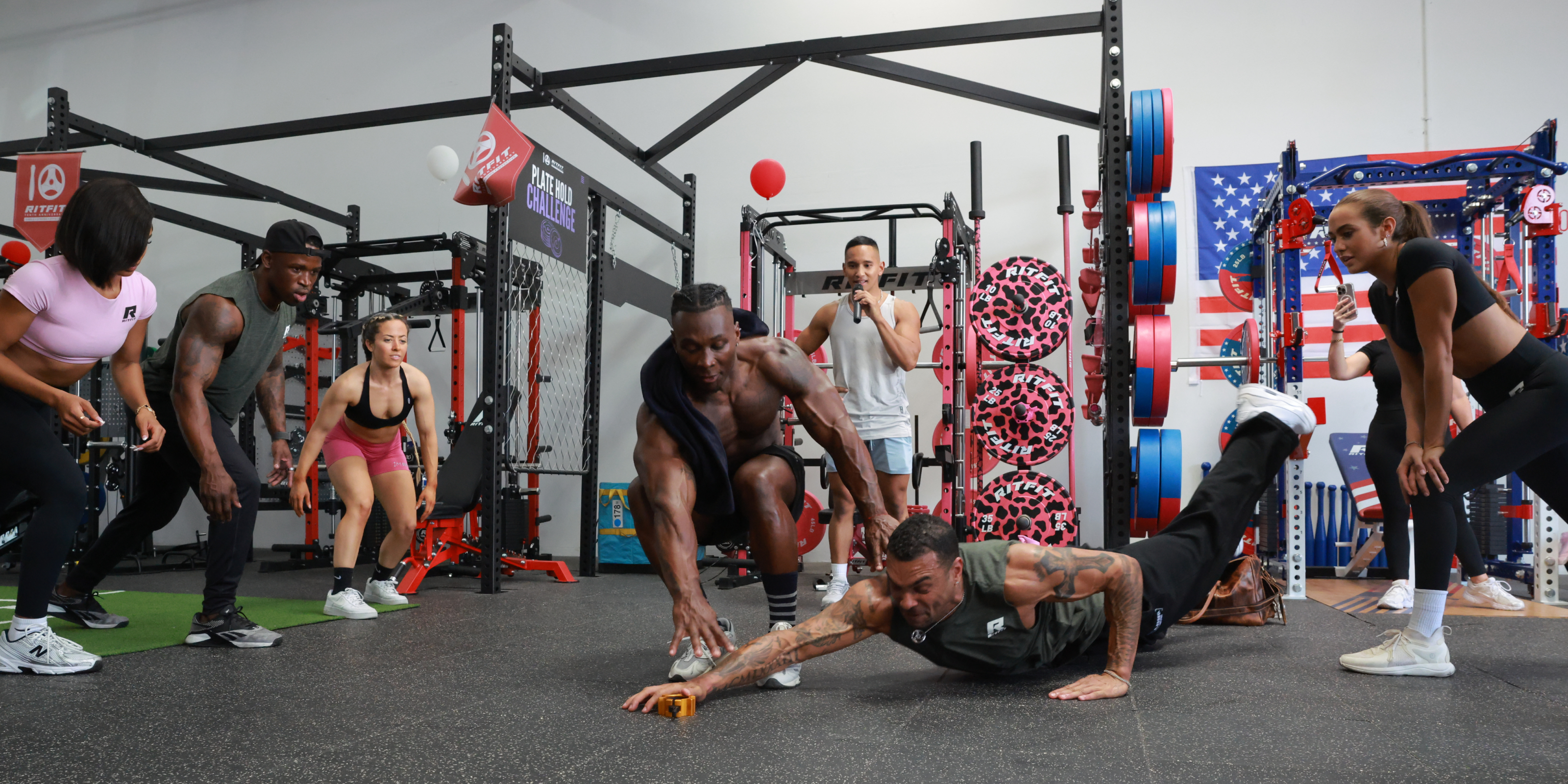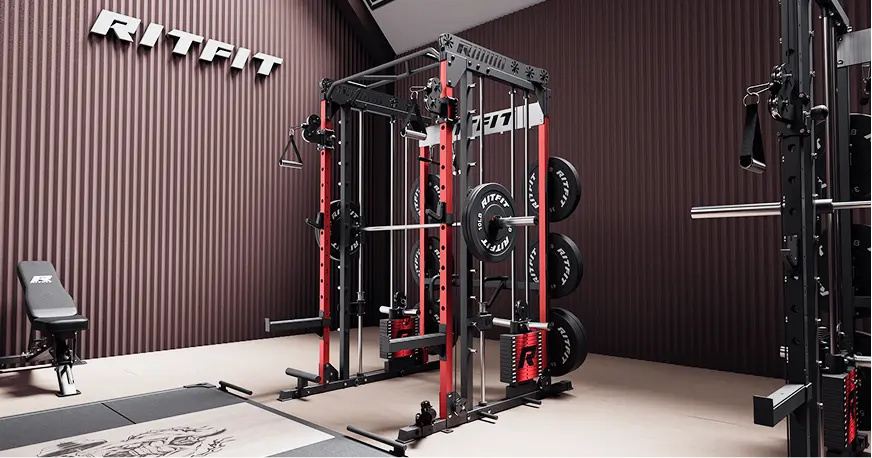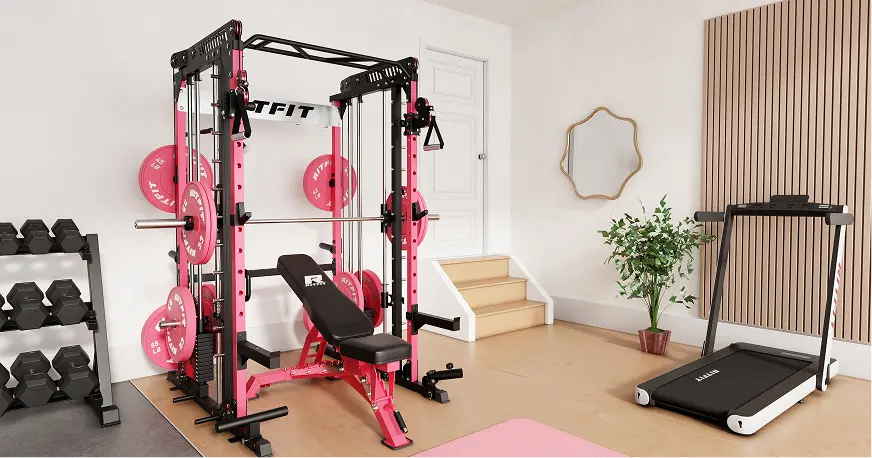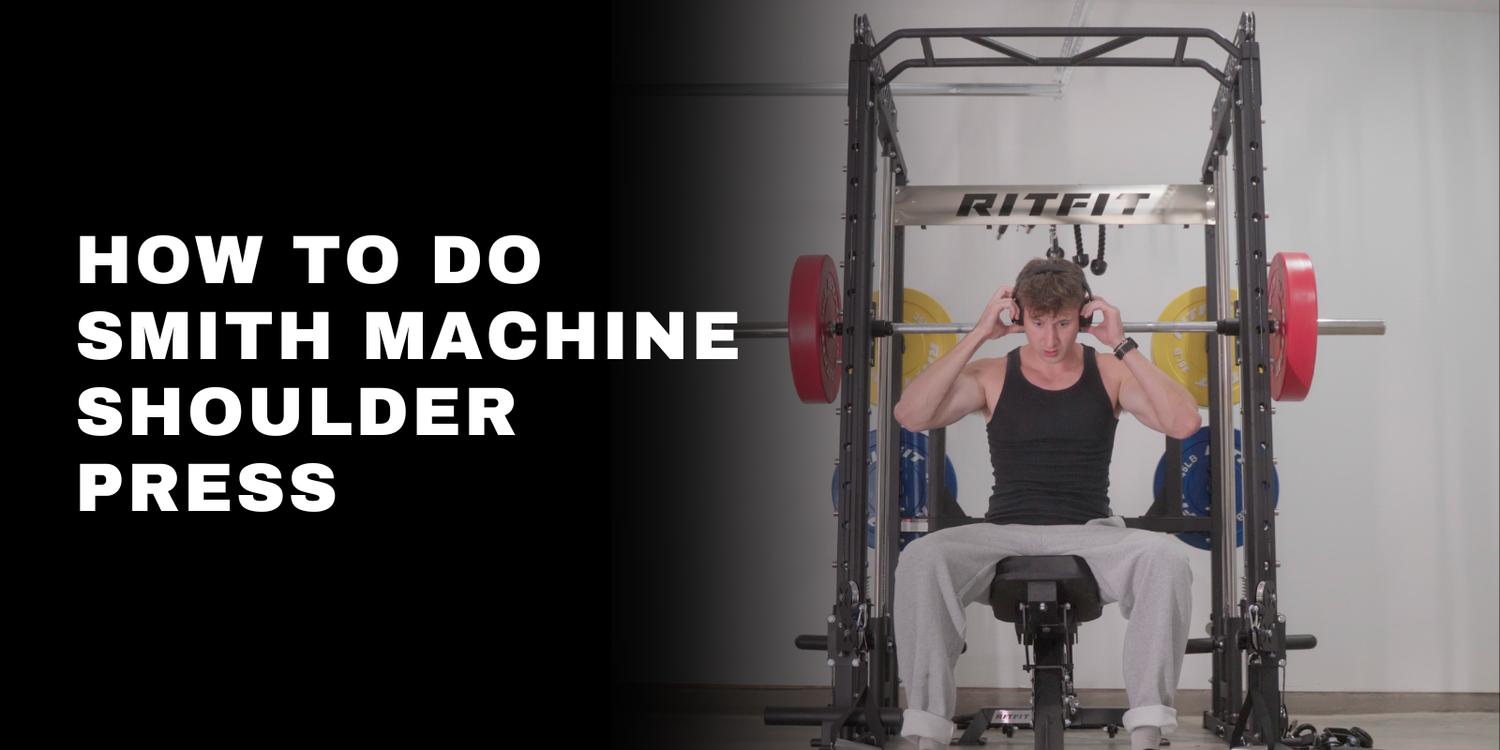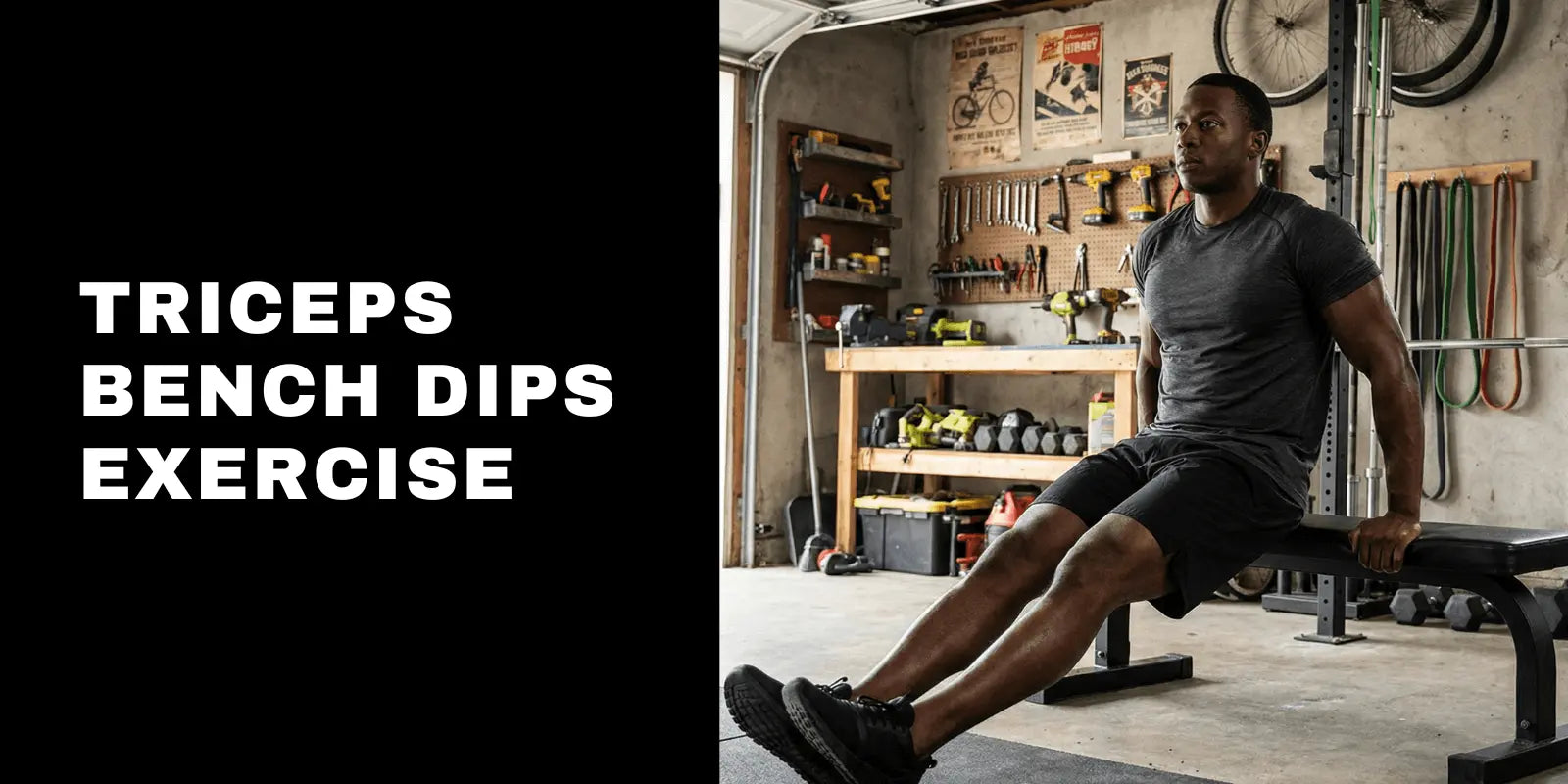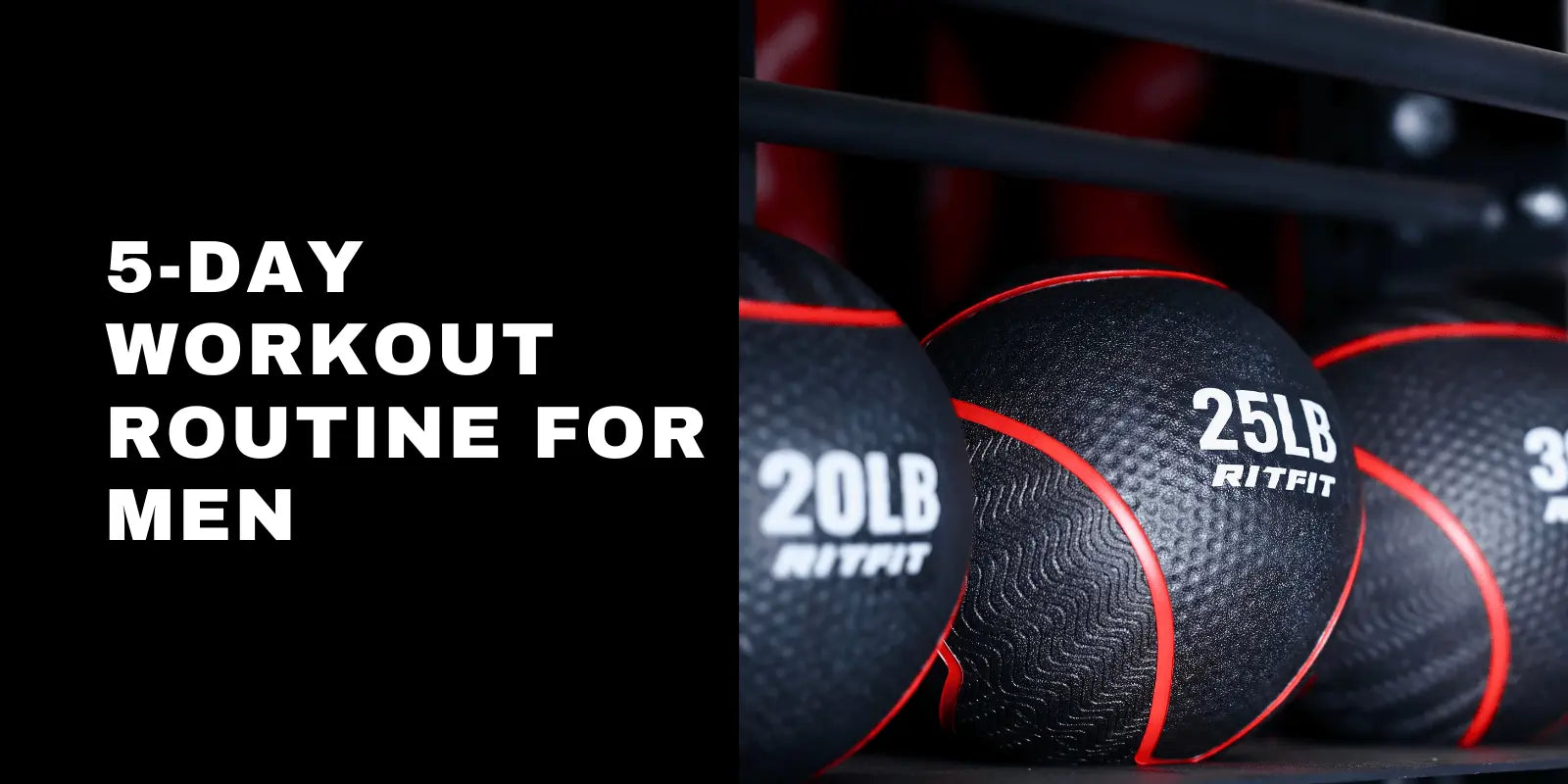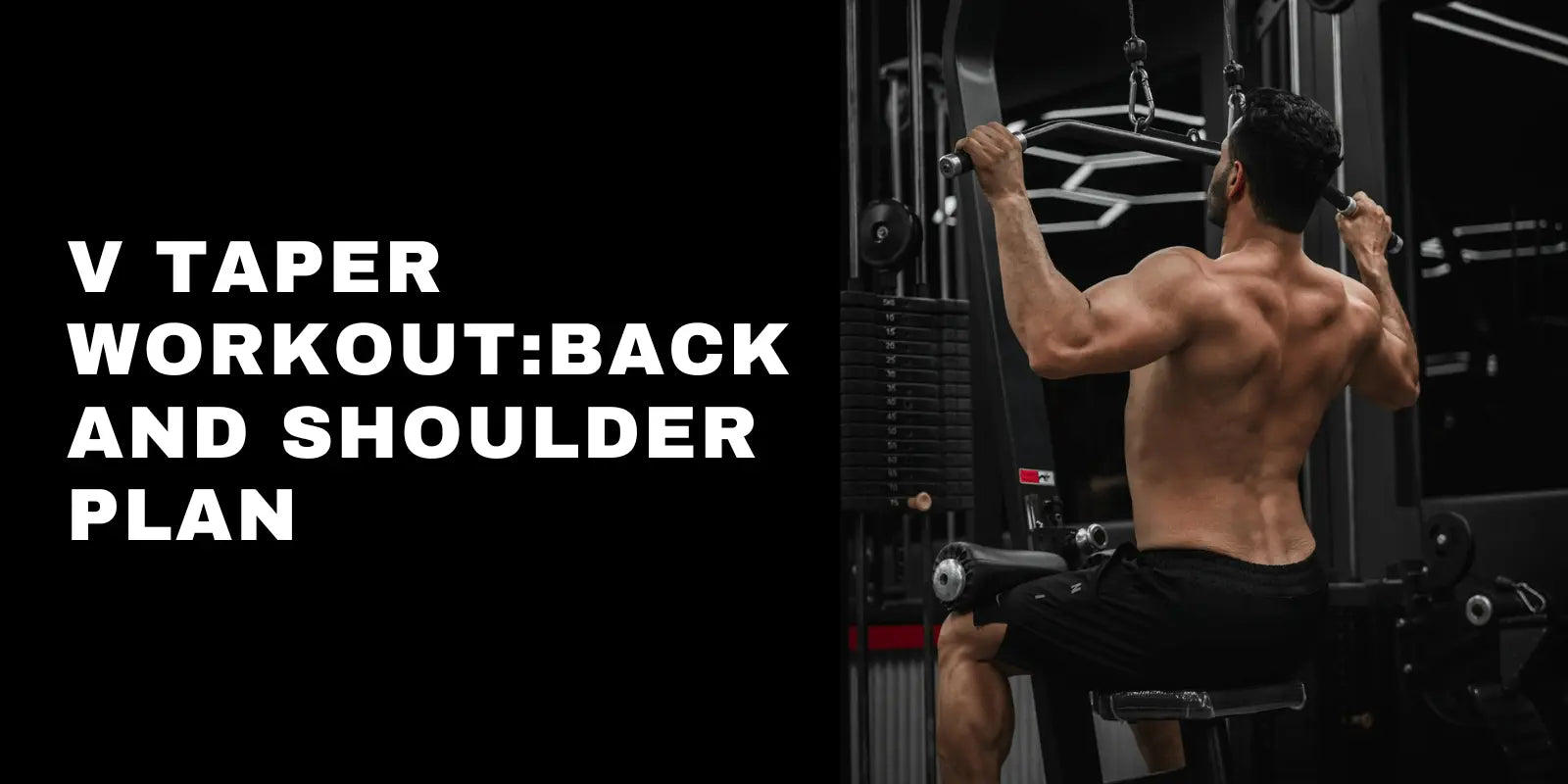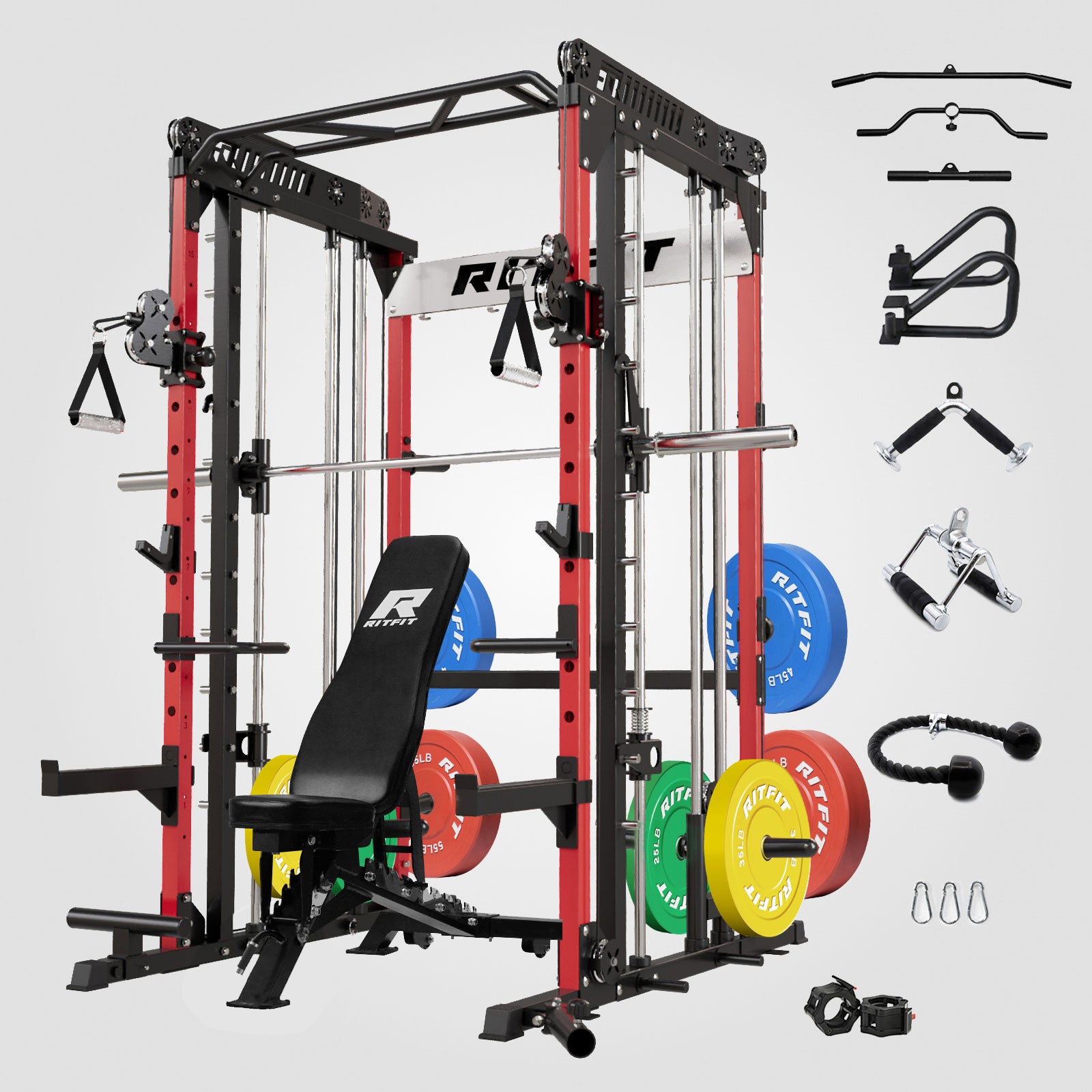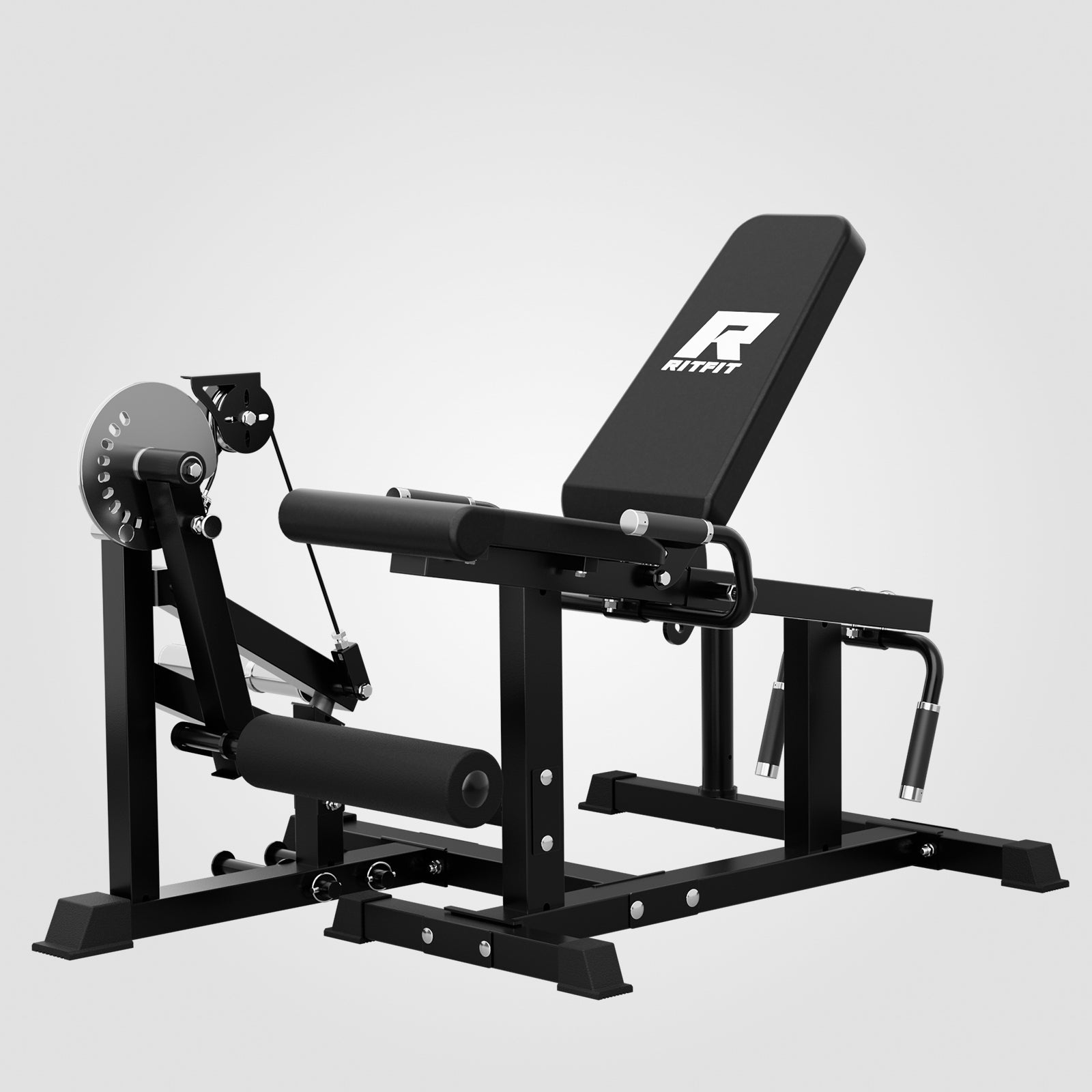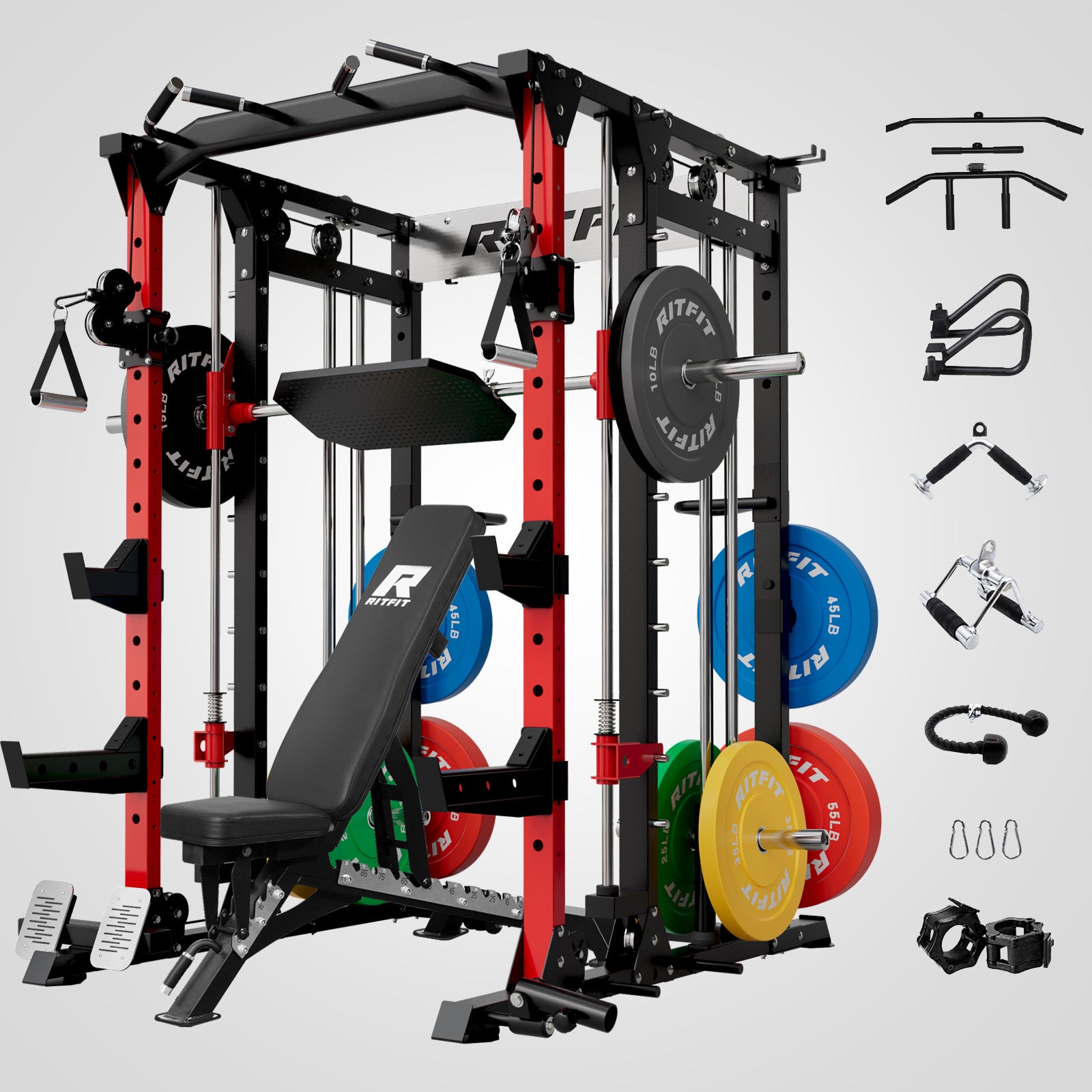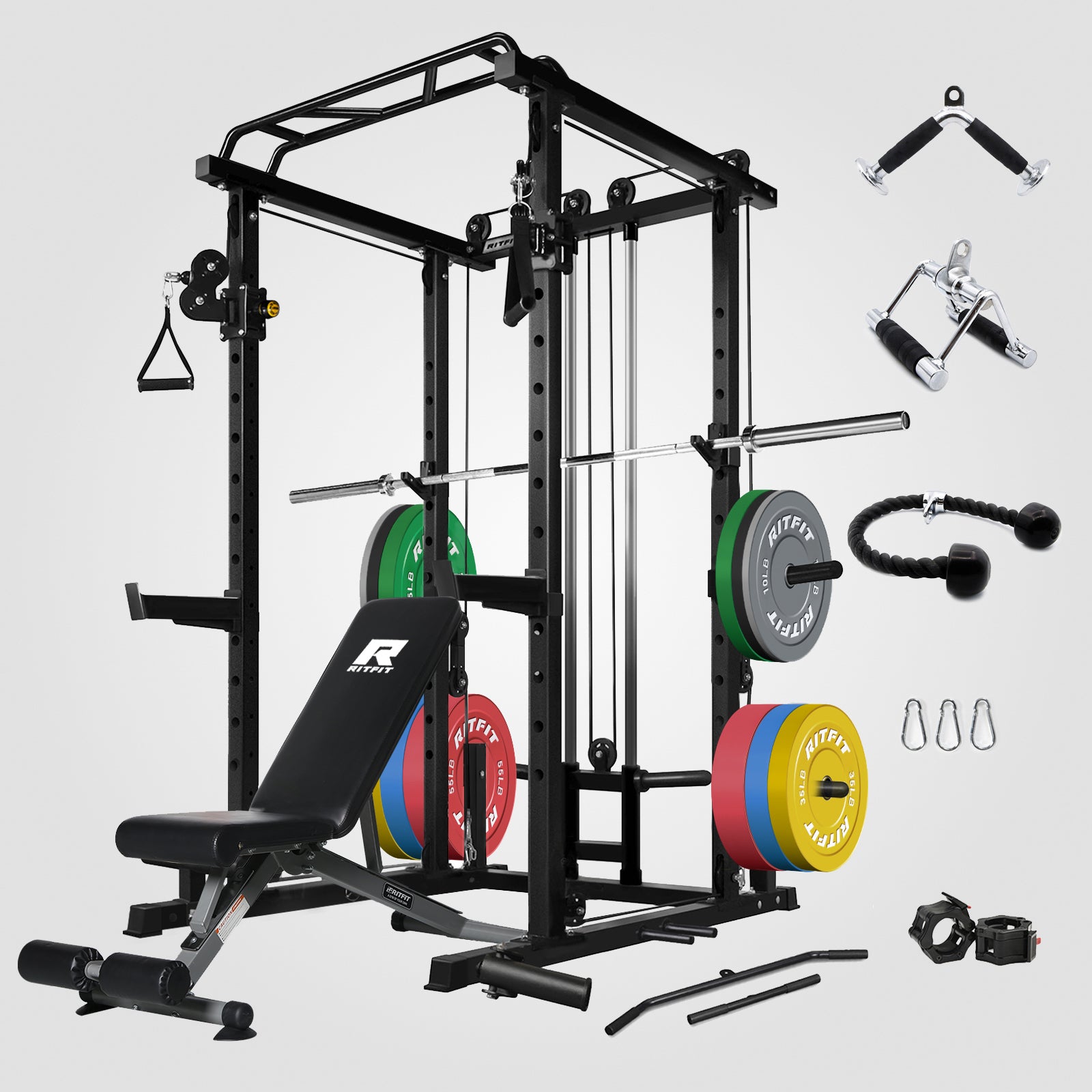Introduction
The Smith machine shoulder press is a safe and effective way to build muscle, improve your posture, and make your upper body stronger, all while keeping your form locked in and your confidence high. You don't have to fight with wobbly barbells or wait for a spotter to get strong, sculpted shoulders.
Have you ever wondered if your shoulder press form is keeping you from getting stronger? The Smith machine takes the guesswork out of it so you can focus on what really matters: getting stronger, lifting heavier, and pressing smarter. Let's go over how to master this move so you can get a lot stronger in your next shoulder workout.
Benefits of the Smith Machine Shoulder Press
The Smith Machine Shoulder Press is a prime exercise for building full, rounded shoulders. If you're a beginner who wants to start from the ground up with a movement pattern that just about everyone can feel safe doing.
For an experienced lifter looking for small ways to clean up and tweak their pressing form, this movement gives you many benefits that add to strength (and safety), including muscle growth.
Enhanced Stability and Safety
The Smith machine's fixed rail system keeps the bar moving in a straight line, so you can concentrate on pressing power instead of balance. This built-in stability makes it less likely that you'll drop the bar or get out of alignment, which makes it a safer choice, especially when you're lifting heavy weights or working out without a spotter.
Targeted Muscle Activation
The Smith machine shoulder press lets you better isolate the deltoids, triceps, and upper chest by getting rid of unnecessary stabilizers. This targeted muscle recruitment makes it easier to get balanced shoulder development and increase muscle size in the areas that matter most.
Perfect for Beginners and Injury Recovery
For novices or for people re-entering lifting after an injury, the Smith machine is a safe and user-friendly environment. It teaches you correct pressing mechanics and reduces joint stress. No more shoulder pain when pressing with free weights.
Easier Progressive Overload
A 2023 study found that machine-based exercises (like those on a fixed path) allow higher loads to be lifted compared to free-weights, due to increased stability[1]. You don't have to worry about stabilizing it. This makes the Smith machine a great tool for progressive overload, which is an important part of gaining muscle, strength, and overall performance.
Consistency Across Workouts
Because the machine is stable, each rep follows the same motion pattern. This lets you focus on keeping your form consistent and tracking your progress. This predictability is very important for keeping track of progress and improving technique over time.
Improved Shoulder Health and Function
A stronger shoulder press means better posture, stronger joints, and more functional strength in everyday life. The Smith machine shoulder press helps you move and feel better both in and out of the gym by making you more stable and lowering the risk of injury.
How to Master the Smith Machine Shoulder Press
Read on, and you will get to learn how to do the Smith machine shoulder press properly and safely, build strong shoulders, and build overall upper body strength!
Get Ready
Set the Smith machine bar at an appropriate height, then double-check that your bench or seat is in place underneath for proper shoulder alignment. Make certain there is a little room around you for a full range of activity without limitation.
Step 1: Take Your Starting Position
Position: Sitting on the bench with your back pressed comfortably against the support and feet on the floor. Take the bar with a shoulder-width grip and palms facing forward, and have your elbows very slightly bent.
Step 2: Unrack the Bar
Gently pull the bar from the rack and lower it over your shoulders. Stabilize your head, back, and core before you press.
Step 3: Press Overhead
Lift the bar up in a controlled manner until your arms are straight above your head. Don't lock your elbows too tightly; slight bending is good to avoid any jarring on your joints.
Step 4: Lower the Bar
Lower the barbell slowly until your arms are level with your shoulders. Concentrate on controlled movement; do not allow the bar to roll too far forward or backward.
Step 5: Repeat and Progress
Do as many of these exercises as you can with perfect form. Add more weight or sets as you become stronger and more comfortable.
You'll end up bench pressing, become compact, and press with reckless abandon. This structure allows for a safe and effective shoulder workout while the main focus remains on utilizing the stability and guidance ready for heavy clock presses.
What Muscles Does The Smith Machine Shoulder Press Work?
The Smith machine shoulder press is a great way of working your shoulders and arms all at once, promoting strong, stable, and big muscles.
Primary Muscles:
Deltoids
The shoulder press is dominated by the deltoid muscles: anterior, lateral, and posterior. They lift and hold your arms overhead, adding strength to—as well as form for—your shoulders.Research shows that the shoulder press exercise elicits higher activation of the anterior and medial deltoids compared to bench press and fly movements[2].
Triceps
The triceps help to extend your elbows as you press. Active engagement with them helps drive the bar up while keeping control, which adds definition to your arms.
Upper chest and clavicular fibers
Although it's not the main mover, the upper chest also plays a role with your shoulders in the press. This synergistic activation provides an overall fuller upper-body aesthetic and promotes shoulder stability.
Accessory Muscles:
Rotator cuff
The insufficiency of the rotator cuff muscles stabilizes the shoulder joint during motion. They provide injury prevention and also keep the deltoids and arms in place while lifting.
Core and upper back
Presses need a solid base, and that starts with a tight core and strong upper back. These muscles help maintain your spine in the correct position and enable you to safely generate more strength, particularly when lifting heavier loads.
Forearms and grip
This is often a gripping exercise, with forearms holding and controlling the bar. A solid hand placement helps keep the bar stable and eliminates unnecessary stress at the elbows and wrists.
If you know which muscles are involved in the Smith machine shoulder press, then your training efforts can be better directed to maximize shoulder development. This information also assists with form correction and injury prevention, along with making each rep count.
Common Mistakes to Avoid
Mastering the Smith machine shoulder press means knowing not just what to do, but also what to avoid to keep your shoulders safe and strong.
Arching the Back Excessively
Hunching forward or arching your back causes unnecessary strain on the spine, neck, and shoulders. During the press, keep your core tight and your lower back down to uphold proper alignment.
According to a 2010 study, insufficient core stability during overhead lifts can lead to compensatory movements such as excessive lumbar extension (arching the back), increasing injury risk[3].
Flaring Elbows Too Wide
Excessive elbow flaring can worsen the risk of shoulder impingement. Elbows stay a bit in front and under the bar for safe, efficient muscle engagement.
Dropping the Bar Too Quickly or Too Low
Bringing the bar down rapidly or below your chin decreases stability and may compromise the shoulder joint. Control your motion and do not drop the bar all the way down to your eyes; get it just far enough so that you can be fully focused on it.
Looking Up or Forward Incorrectly
Holding your head down too much or looking far ahead puts the neck into an uncomfortable and unnatural position. Maintain a neutral head position (only a slight tuck of the chin) to prevent strain.
Applying Too Much Pressure Without Control
Lifting excessively heavy without good form will squash your gains and spike your injury risk. Concentrate on smooth, controlled pressing up to a safe limit of range of motion rather than lifting the maximum amount of weight possible each set.
Neglecting Shoulder Engagement
Failing to engage your shoulder may cause the work to transfer over to your chest or triceps. Pay attention to the feel of the shoulder muscles contracting both on the way up & down; full rotation motion for best results. These simple tweaks will eliminate mistakes and allow you to have safe, strong, and balanced shoulders.
Technique Tips for an Effective Shoulder Press
Learning how to do a shoulder press on the Smith machine is about more than simply setting up and getting going. This exercise, done incorrectly, can be dangerous, but with the proper form, you'll not only keep your shoulders safe but also engage your deltoids effectively.
Feet Position
Stand with your feet flat on the floor, no more than shoulder-width apart, for a good base of support and balance during exercise. Decent foot positioning will keep you in control as you press the bar overhead.
Bar path
The bar should move in a straight line, directly above the face or slightly out in front of it, to avoid undue stress on the shoulders and ensure a 90-degree angle. Do not allow the bar to move forward or backward very much.
Grip Width
Use a grip just wider than shoulder-width to work your deltoids effectively and minimize wrist/elbow stress. Ease if necessary to be comfortable and make pressing easy.
Core Activation
Contract your core at all times during the press to protect your back and keep it from arching too much. This promotes better balance and minimizes the chances of injury.
Head and Elbow Position
Maintaining a neutral head position, a slightly forward position of the elbows (not flared elbows) can be very effective to help protect the shoulder joint in overhead movements. Make sure to keep your elbows under the bar every step of the way.
Controlled Reps
Don't try to jerk or bounce the bar; bring it down smoothly and control each rep. Breathe out as you press the bar up and breathe in as you lower it for more muscle engagement.
Smith Machine Shoulder Press vs Smith Machine Overhead Press
Bar Path and Pressing Angle
The slightly forward bar path is a characteristic of the Smith machine shoulder press and helps to keep your elbows under the bar, so you limit shoulder wear and tear.
On the other hand, a lot of lifters do a more vertical bar path on the Smith machine overhead press, which may stimulate all-around deltoid stimulation but can be tough on your shoulder joint if form isn't perfect.
Grip Width and Position
The shoulder press grip is typically narrower, meaning slightly outside shoulder-width, to really hit those anterior delts hard. The grip for the overhead press can be slightly wider or more neutral to engage the delts more fully and enhance overhead mobility.
Range of Motion
Perhaps the most effective coaching of the traditional shoulder press you often hear is to "cease at eye level or top," which keeps safety in mind and promotes control through shoulder engagement.
The Overhead Press: This generally brings the bar all the way overhead, which helps to maximize activation of your upper shoulders and triceps, but you're sacrificing a little stability and mobility at the shoulder.
Muscle Emphasis
The shoulder press hits the anterior and medial delts without involving your lower back. Overhead press hits more upper chest, traps, and core, along with all three heads of the delts, giving a full upper body workout.
Safety and Joint Stress
The Smith machine shoulder press is often safer for novice trainees and lifters working around injuries, as the bar path is fixed and the range of motion shortened.
The overhead press, while effective for strength and size, requires focus on form to keep excessive pressure off the shoulders and lower back.
Practical Application in Training
Leverage the shoulder press for high-rep 'tension' and form mastery to build big shoulders. It is a great exercise to develop overall pressing strength, increase full-body stability with overhead movements, and prepare the body for lifting free weights on other lifts.
Both variations have their own advantages, and using them in a strategic manner may develop stronger shoulders with minimal risk of injury.
Final Thoughts
The shoulder press on the Smith machine is a safe, efficient way to increase shoulder strength and development while improving upper body posture and stability. It ensures even muscle development and allows you to access your maximum strength at all times by specifically targeting deltoids, triceps, and the upper chest.
Advantages of the Smith machine: Using a Smith machine limits your risk for injury, helps you maintain proper form, and allows for easy progression into higher-weight amounts, which is great for both beginner and advanced weightlifters. They added strength training to your regular workout routine with the RitFit Smith machine, which helps you take it to the next level, doing workouts in a more controlled and efficient manner.
References
- Haugen ME, Vårvik FT, Larsen S, Haugen AS, van den Tillaar R, Bjørnsen T. Effect of free-weight vs. machine-based strength training on maximal strength, hypertrophy and jump performance - a systematic review and meta-analysis. BMC Sports Sci Med Rehabil. 2023;15(1):103. Published 2023 Aug 15. doi: 10.1186/s13102-023-00713-4
- Campos YAC, Vianna JM, Guimarães MP, et al. Different Shoulder Exercises Affect the Activation of Deltoid Portions in Resistance-Trained Individuals. J Hum Kinet. 2020;75:5-14. Published 2020 Oct 31. doi: 10.2478/hukin-2020-0033
- Behm DG, Drinkwater EJ, Willardson JM, Cowley PM. The use of instability to train the core musculature. Appl Physiol Nutr Metab. 2010;35(1):91-108. doi: 10.1139/H09-127

